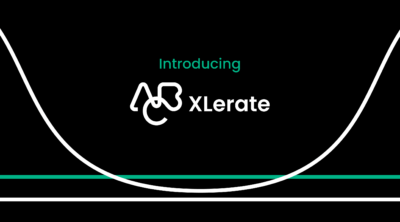Yoga has grown in popularity over the last few years, with passionate yogis stretching all around the world. Roughly 36% of the world’s population practices yoga, that’s about two billion people. It’s no secret that the yoga industry is booming. In the last several years, yoga has exploded in the U.S showing no signs of slowing down.
With over 6,000 yoga studios in the United States alone, current trends in the yoga industry show a lot of promise of growth for you and your studio. However, this also means there will be a lot of competition. You should distinguish your yoga studio from the competition and focus on your demographic. To do this, you need to create the perfect yoga business plan.
A business plan helps you to determine your goals, figure out your funding and select a suitable location, to name a few. Your yoga business plan will be your guide to growing your business effectively in the first year and well into the future. Whether you’re a new business owner or have been in the yoga biz for years, a detailed and concise business plan is exactly what your yoga business needs.
In this guide, these are the steps we are going to be talking about to help you create, research and develop a yoga business plan that will get you started on the road to success.
- Yoga Industry Overview and Competitor Analysis
- Executive Summary
- Customer Analysis
- Services and Products
- Sales and Marketing
- Cost Projections and Funding
Yoga Industry Overview and Competitor Analysis
Starting a new business requires a significant amount of planning and strategy. Take an in-depth look at the yoga industry, current trends and how the industry is expected to grow. Yoga classes make up the majority of the industry’s revenue with yoga and pilates classes accounting for 71% of all revenue generated in the U.S. Finding out where the current yoga industry stands and where it’s predicted to be will help you to position your yoga studio well.
The demographics of yoga will also guide you in many decisions down the line and help define your target market. The majority of yoga practitioners are female, with 72% hitting the mat regularly. There has also been a 300% increase in the number of American over 50s practicing yoga.
During this stage, you can find out more about what your competitors are doing. Competitor analysis is critical, especially in terms of pricing and location. This initial step in your business plan will help you outline the problems your yoga business will be solving and show your competitive advantage.
To kickstart your business plan, check out BPlans monster library of resources. They have free basic business templates you can download and use for your own business as well as a ton of information on writing business plans.
Executive Summary
The executive summary is the introduction to your business plan, and it’s meant to keep the attention of the reader and truly capture your business proposition. The synopsis is designed to provide an overview of your yoga business and answer questions such as:
- Who are your ideal customer and target market?
- What type of classes will you offer?
- What are your financial projections?
- Why is your yoga studio different from the competition?
- What are your goals and how will you achieve them?
Although the executive summary is at the beginning of your business plan, generally it’s easier if you write it last. This way, you can cull all the information you need from the rest of your plan. The executive summary basically highlights the rest of your business plan in a concise, detailed and interesting way.
To help get you started, check out Tim Berry’s Hurdle: The Book on Business Planning. The world-renowned expert on business planning breaks every step of building a business plan into digestible and actionable points. With plenty of examples on a range of elements from calculating profit to keeping track of your cash flow, the book comes complete with a workbook so you can construct a business plan as you read.
Another valuable resource is the J. Brown Yoga Talks podcast. The yoga teacher and writer interviews yoga teachers to discuss philosophy and the business of yoga. Listen to the episodes “Inside the Yoga Alliance” with Kerry Maiorca and “Instagram Yoga Girl on What is Real” with Rachel Brathen.
Customer Analysis
It’s no surprise that finding out about your customers is an integral part of creating your business plan. By carrying out customer analysis during the planning process, you examine which people are most likely to invest in your service and attend yoga classes. Once you understand what motivates your customers, you can build a business around providing a solution to their needs.
Knowing your audience and identifying your ideal client lets you know how to reach your customers, where they hang out both online and offline as well as what they want. Whether you want to offer a broad range of classes to a wider audience or cater to a more niche audience, your ideal client profile helps to firm down these decisions. A better understanding of your customer and potential customers is needed to increase sales and grow your yoga business.
To help you perform a customer analysis, here are a few steps you can take:
- Identify your current or potential customers – the more detail and understanding you have the better. You can split this group into sub-groups that have similar motivations, traits, age, income, and education.
- Find out the needs of your customer groups.
- Work out how your yoga service or products meet the need of each customer group.
For some excellent business inspiration check out:
- The One Page Business Plan for the Creative Entrepreneur by Jim Horan
- The Art of the Start 2.0 by Guy Kawasaki
- The Secrets to Writing a Successful Business Plan by Hal Shelton
What Services and Products Do You Offer?
This section of your yoga business plan will delve into the services and products you will be offering. Creating detailed and compelling descriptions of your yoga service is an essential step in your yoga business plan. A description of your yoga service will cover a number of elements from types of yoga classes on offer to how students will book classes.
The Customer
Engagement Playbook
for Your Fitness
Business
Discover more The services you provide determine the revenue stream for your yoga business. For the majority of yoga businesses, this will be through teaching yoga classes. However, you can generate additional revenue through online classes, workshops, teacher training courses, and yoga retreats.
Some of the newest trending yoga styles include Acro Yoga and Doga, yoga with your dog. On average, prenatal yoga classes cost more than Ashtanga and Bikram yoga. Experts cite Flexibility and stress relief as the most popular reasons for starting yoga with 98% of people expecting to see an improvement in their health. Now that you have a clear idea of your target market, ideal client, and competition, you can decide what gap your services will fill in the yoga community and where your yoga studio will be located.
Topics that you can include in the services section of your business plan are:
- What style of yoga practice will you be offering? – e.g., Vinyasa, Hatha, Iyengar, and Kundalini.
- Will you be selling yoga products such as yoga mats or yoga clothes?
- How much will you be charging for each class? – consider several pricing structures such as drop-in rates, bulk packages, and monthly memberships.
- What level of experience is the class? – beginner, advanced or open to all abilities.
- Who is the class or product aimed at?
To keep you inspired, listen to the Abundant Yoga Teacher podcast by Amy McDonald. Each episode brings in yoga teachers and holistic practitioners who are looking to create an authentic business which isn’t pushy or ‘salesy.’ The Business of Yoga Speaker Series by Amy is an absolute essential.
Sales and Marketing Strategy
So, how will you attract students and keep them coming back for more? The sales and marketing section of your business plan should aim to answer this question. Without an effective marketing strategy, small businesses wouldn’t survive as no one would know your yoga studio even exists!
When it comes to your marketing plan, you should already have a solid idea of how your potential customer operates and how to reach them from your customer analysis. Depending on your budget, time and resources you have available there are a number of ways you can market your yoga studio and bring in new clients such as:
- Word of mouth
- Sponsored social media advertising
- Influencer marketing
- Local community events
- Content marketing like blogs and videos
- Engaging on social media and building a following
- Partnering with similar non-competing businesses
Developing a marketing plan and implementing marketing ideas can seem a little overwhelming. Fear not! We’ve already done the legwork to help you build a realistic marketing strategy for your yoga studio business.
The sales element of this step focuses on the customer journey. Describe how a customer will discover your business through to payment. Things to consider here include sales points such as a website, branded app or in-person. If your customers can book classes through Facebook, Instagram or your website, this is another way for customers to reach you and make a sale. This section should cover how a customer could turn into a repeat customer and eventually a lifelong member.
For more marketing advice, The Social Organism: A Radical Understanding of Social Media to Transform Your Business and Life by Oliver Luckett and Michael J.Casey, takes a scientific look at the world of social media allowing marketers to formulate plans more intelligently.
Cost Projections and Funding
Opening a yoga studio is a great way to continue your passion and help others, but as with any business you need to have a good understanding of your finances. The cost projections and funding section of your yoga business plan will be a financial overview that will help you to manage your spending and set measurable goals.
This is probably one of the most important parts of your business plan, without proper financial planning and cash flow predictions, it’s difficult to get off the ground. When creating your initial financial outlook, you’ll need to think about startup costs such as marketing, branding, retail inventory, and management software.
Your cost projections will be affected by several elements including:
- Class and membership prices
- Rent
- Maintenance costs
- Additional revenue streams, if any
- Employee salary
If you’re looking for extra funding to bring your dream into fruition, this is the section to create a funding page. Be as detailed as possible as to what financial help you need and what you plan to use it for. You want to show that, without a doubt, your yoga business proposal is a solid investment with a massive potential to grow.
The Anatomy of a Business Plan: The Step-by-Step Guide to Building a Business and Securing Your Company’s Future by Linda Pinson is a classic how-to guide that focuses on creating a well-structured business plan and building for the future with financial and supporting documents.
Listening to podcasts is an excellent way to squeeze in some extra business inspiration and knowledge during your commute or even at lunch. Check out some of the best business podcasts like:
In Summary
A well-researched and detailed business plan puts you in the strongest position possible to achieve your dream of starting a yoga business. It helps to both secure any potential funding you need as well as act as a guidebook to keep you and your team on track. From nailing the right location for your yoga studio to creating the ultimate marketing strategy, a business plan is an essential tool for yoga studio success.















